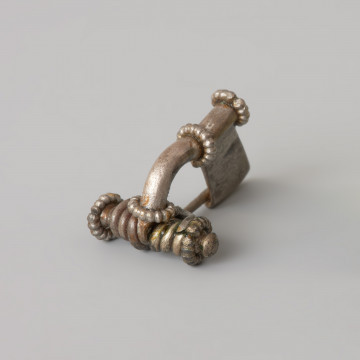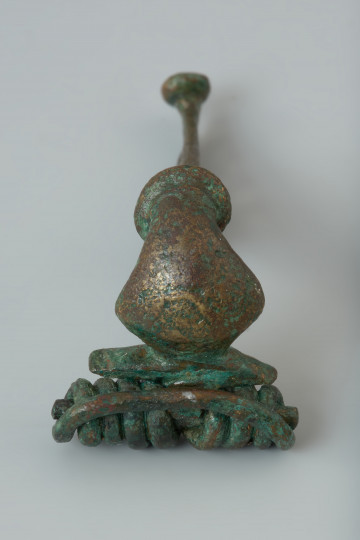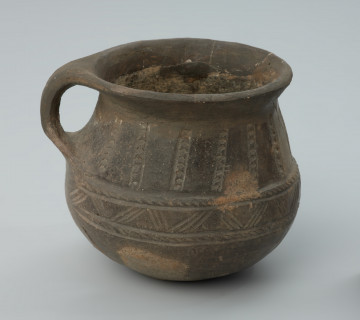
Tortoiseshell buckle
National Museum in Szczecin
Part of the collection: Antiquity
Brooches, known also as fibulae, served two main functions. They could have been used to fasten the outer clothes or to attach neck-rings decorating the outfits. There are many different variants of fibulae, depending on the type of design, decorations or even the type of metal that was used to make them. The presented fibula is distinguished by its characteristic design element, a so-called “hood” – an elbow-shaped cover of the spring. Another typological feature is also a transverse rib, the so-called “crest” on the bow. These elements allow dating the object to the 2nd century. The brooches with a hood and crest generally derive from the Elbe region, although some local variants of that design were also known east of the Order, particularly in the Wielbark culture. The fibula from Brzeźnica was probably a part of furnishing of one of the urned cremations in the cemetery of the Wielbark culture, identified with the Germanic tribes of Goths and Gepids. Some individual objects had been discovered there since the early 20th century. A second, identical bronze fibula was also supposed to have come from the mentioned cremation grave, but archival records are inconclusive. Both fibulae were donated to the then museum in Drawsko, one in 1913 and the other in 1929. A clay vessel with a handle, which is contemporary with both fibulae, was also found on the same cemetery in Brzeźnica.
Bartłomiej Rogalski
Author / creator
Dimensions
cały obiekt: width: 5 cm
Object type
pin (fastener)
Technique
casting
Material
bronze
Creation / finding place
Owner
Muzeum Narodowe w Szczecinie
Identification number
Location / status

National Museum in Szczecin

National Museum in Szczecin

National Museum in Szczecin
DISCOVER this TOPIC
National Museum in Lublin
DISCOVER this PATH
Educational path